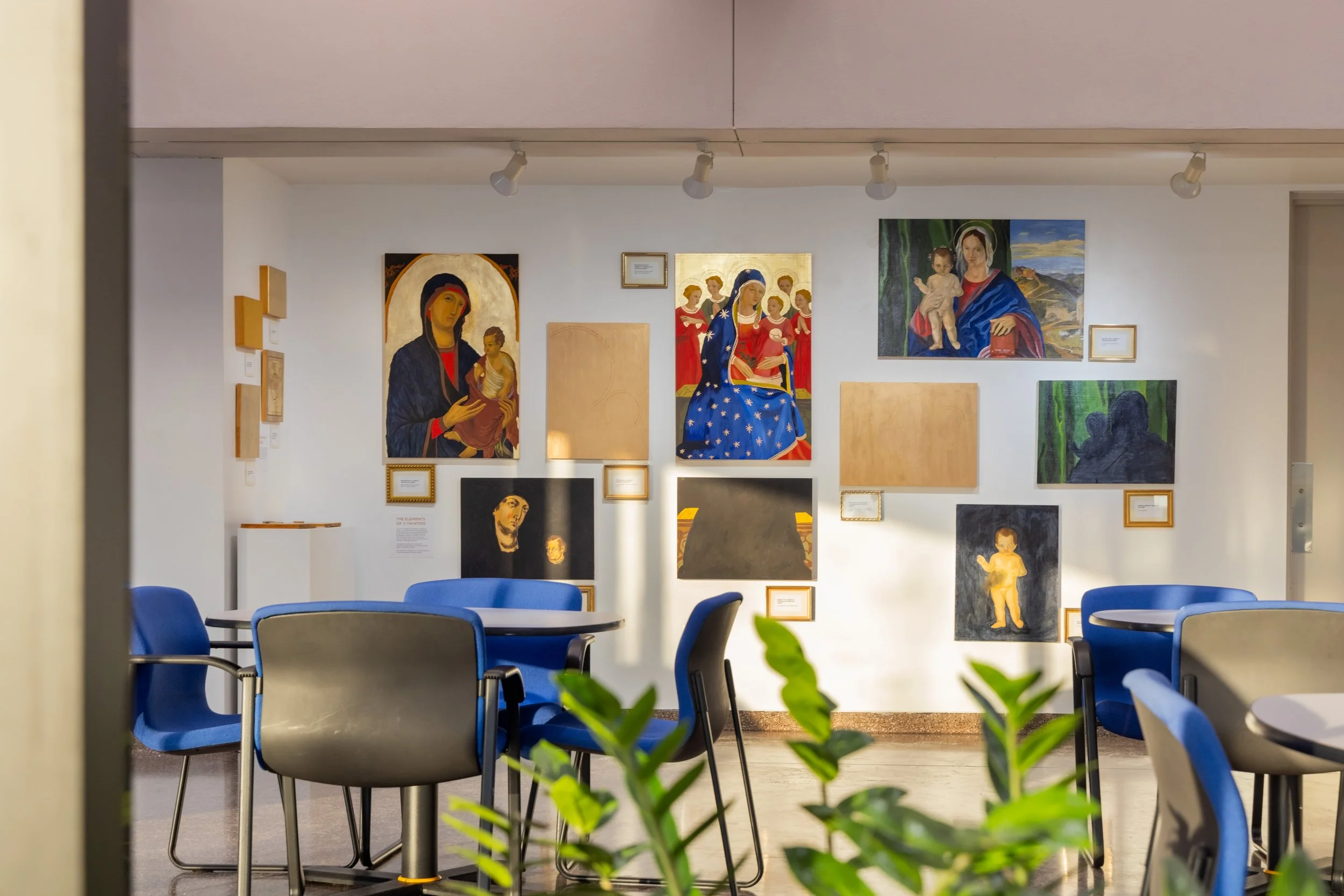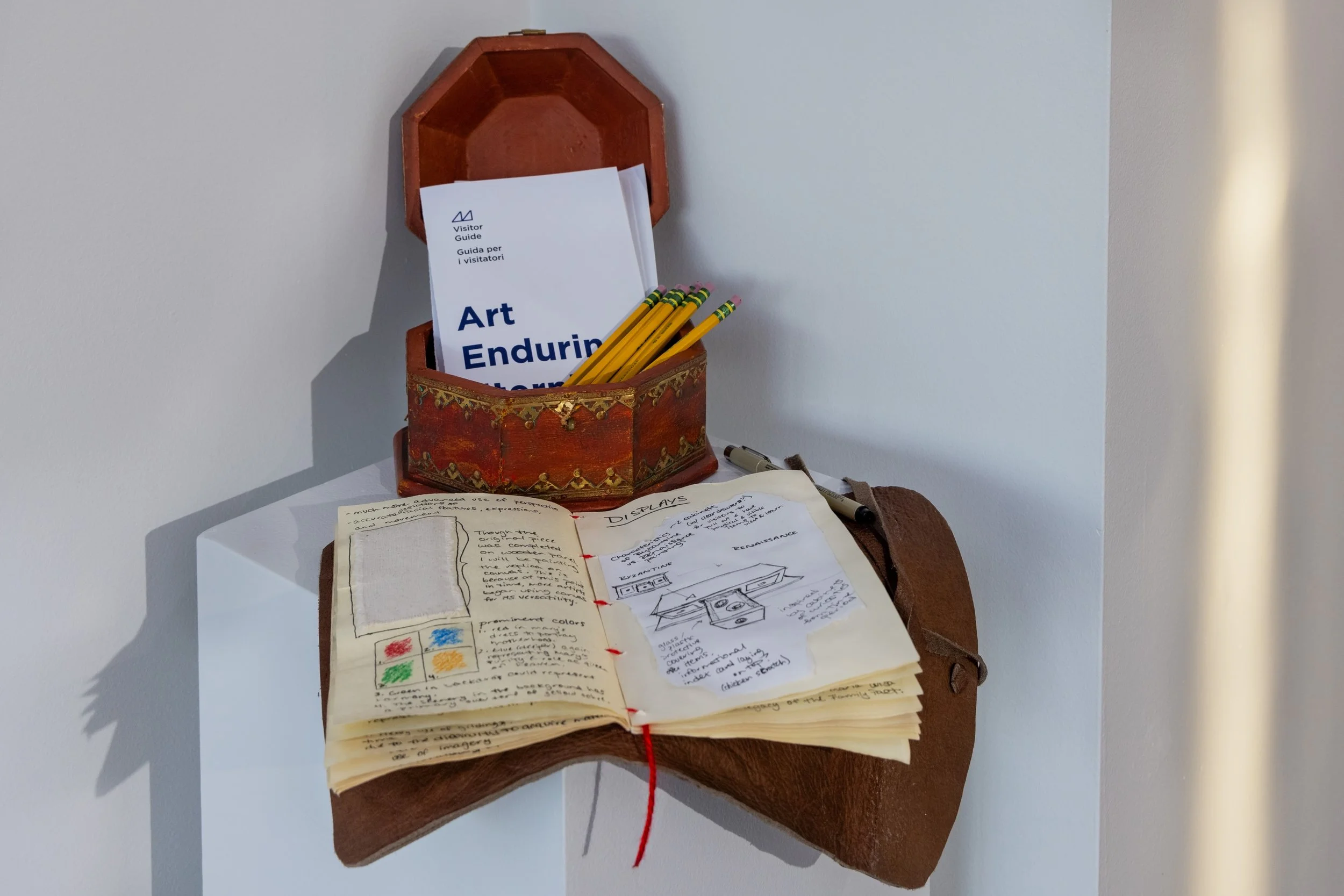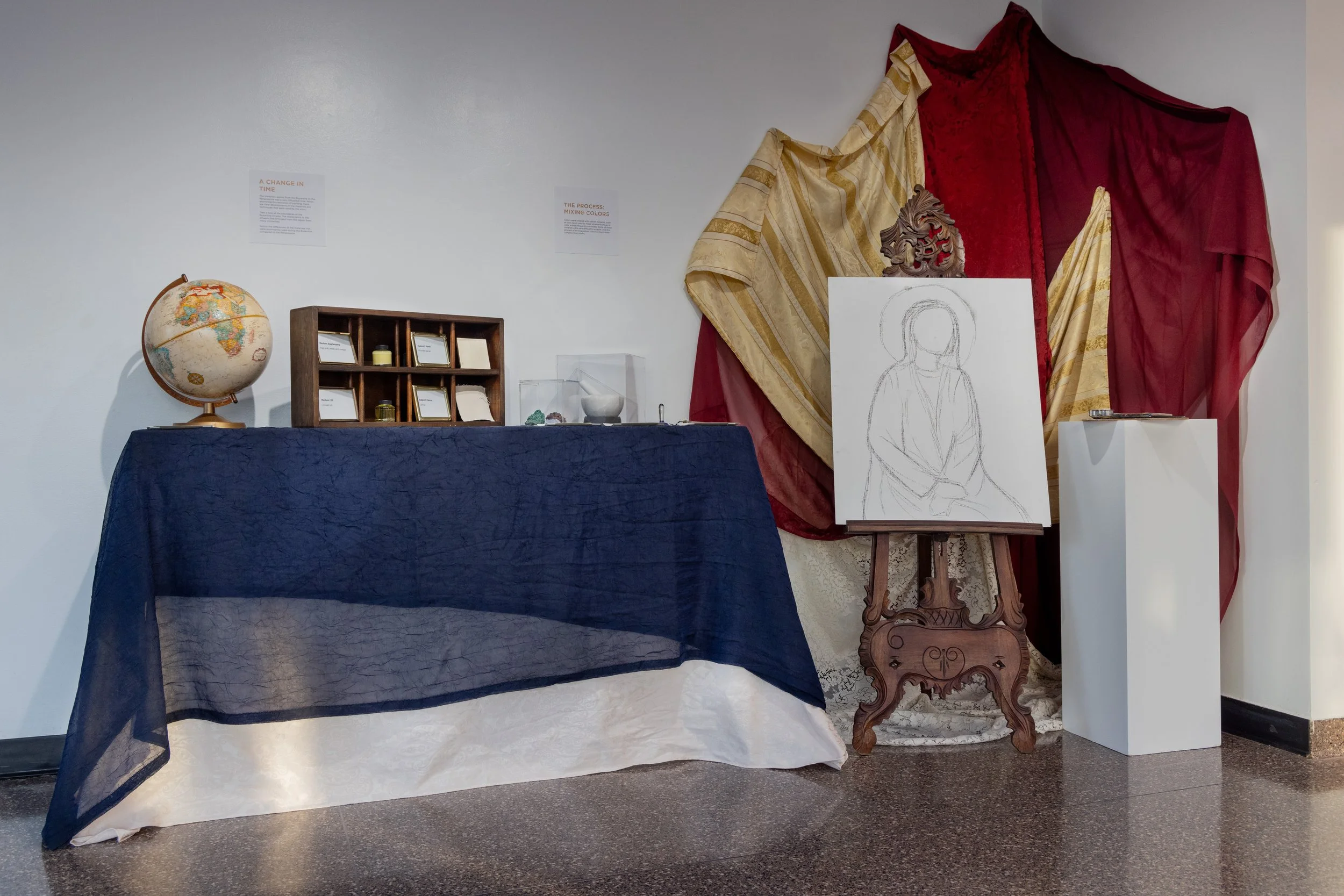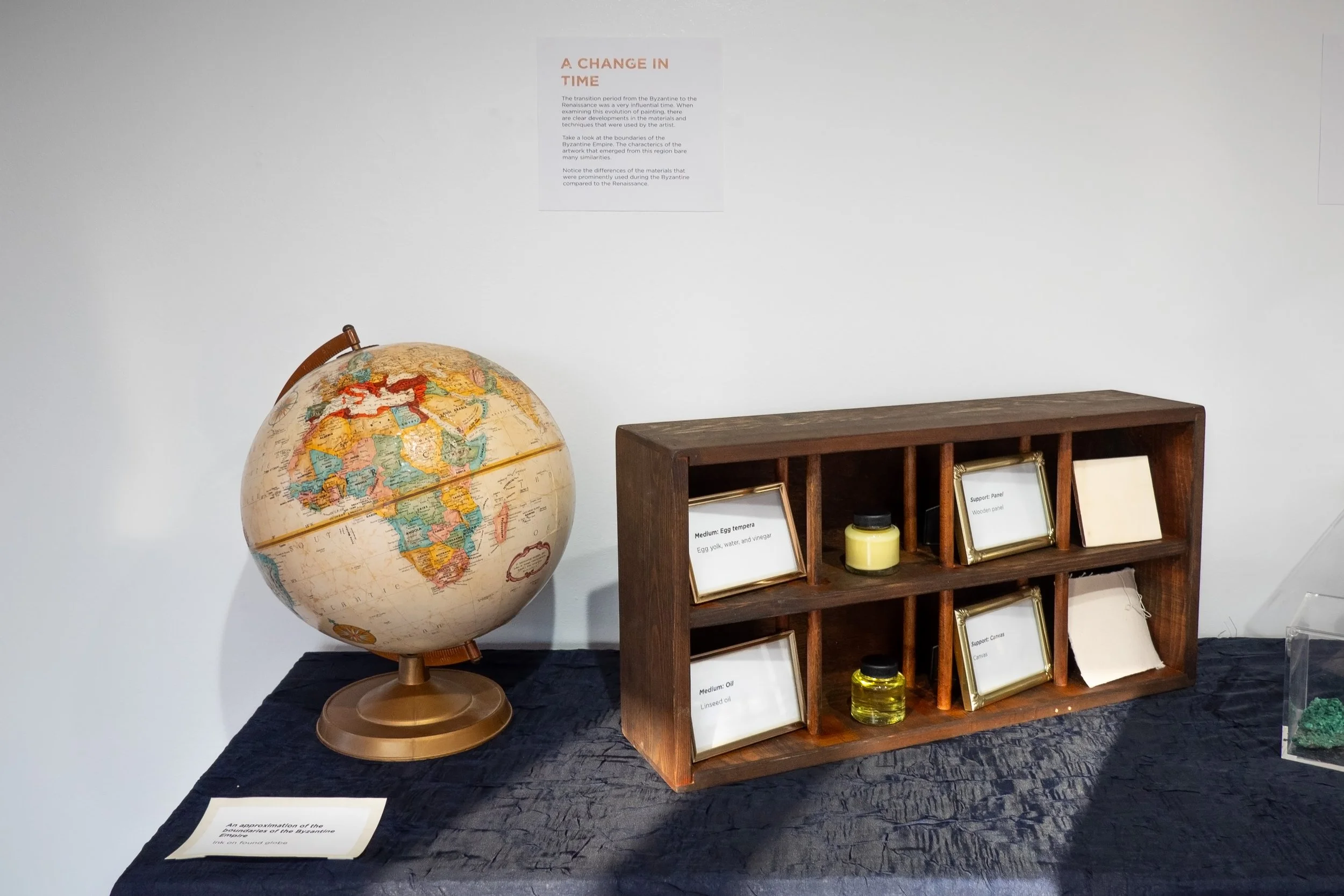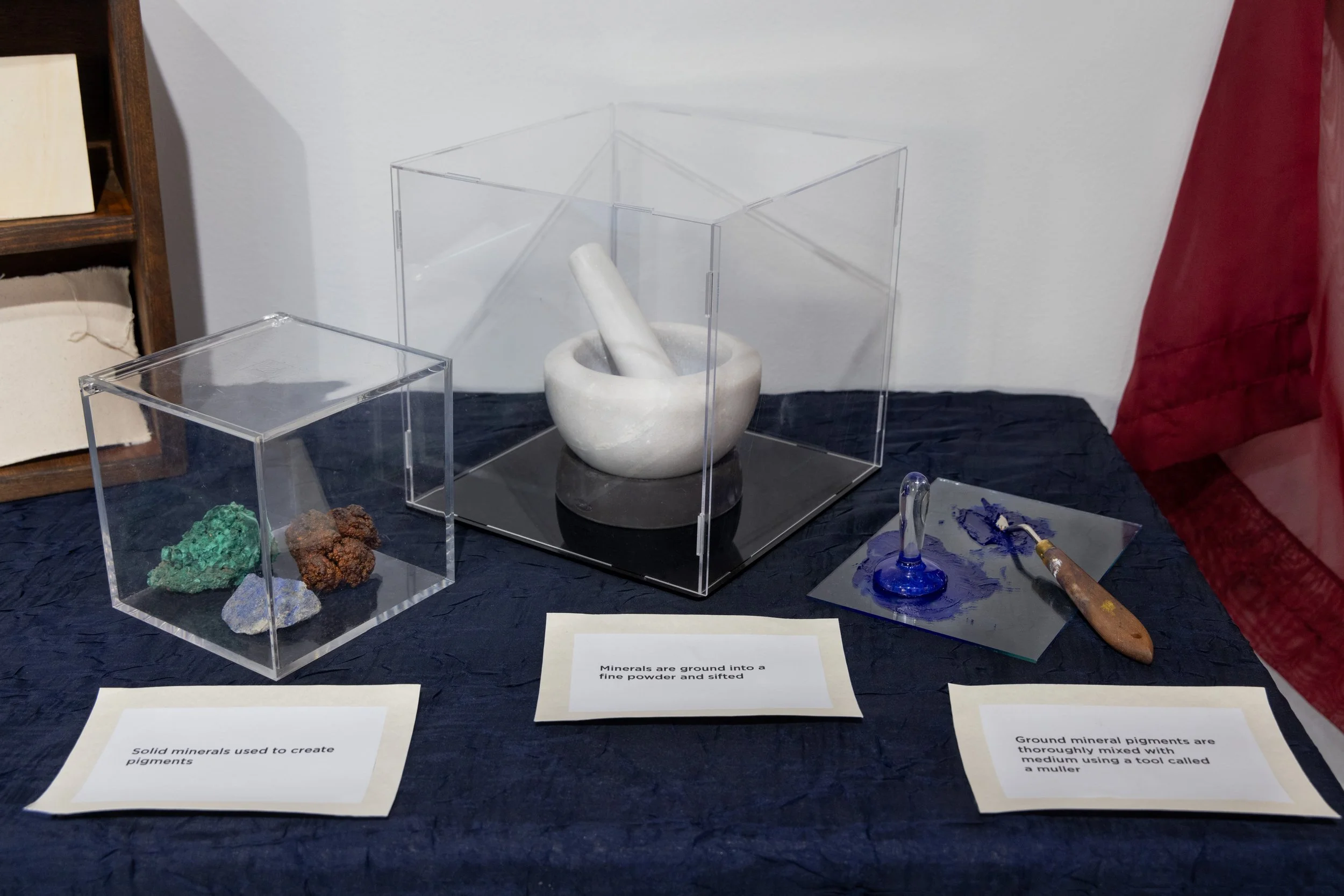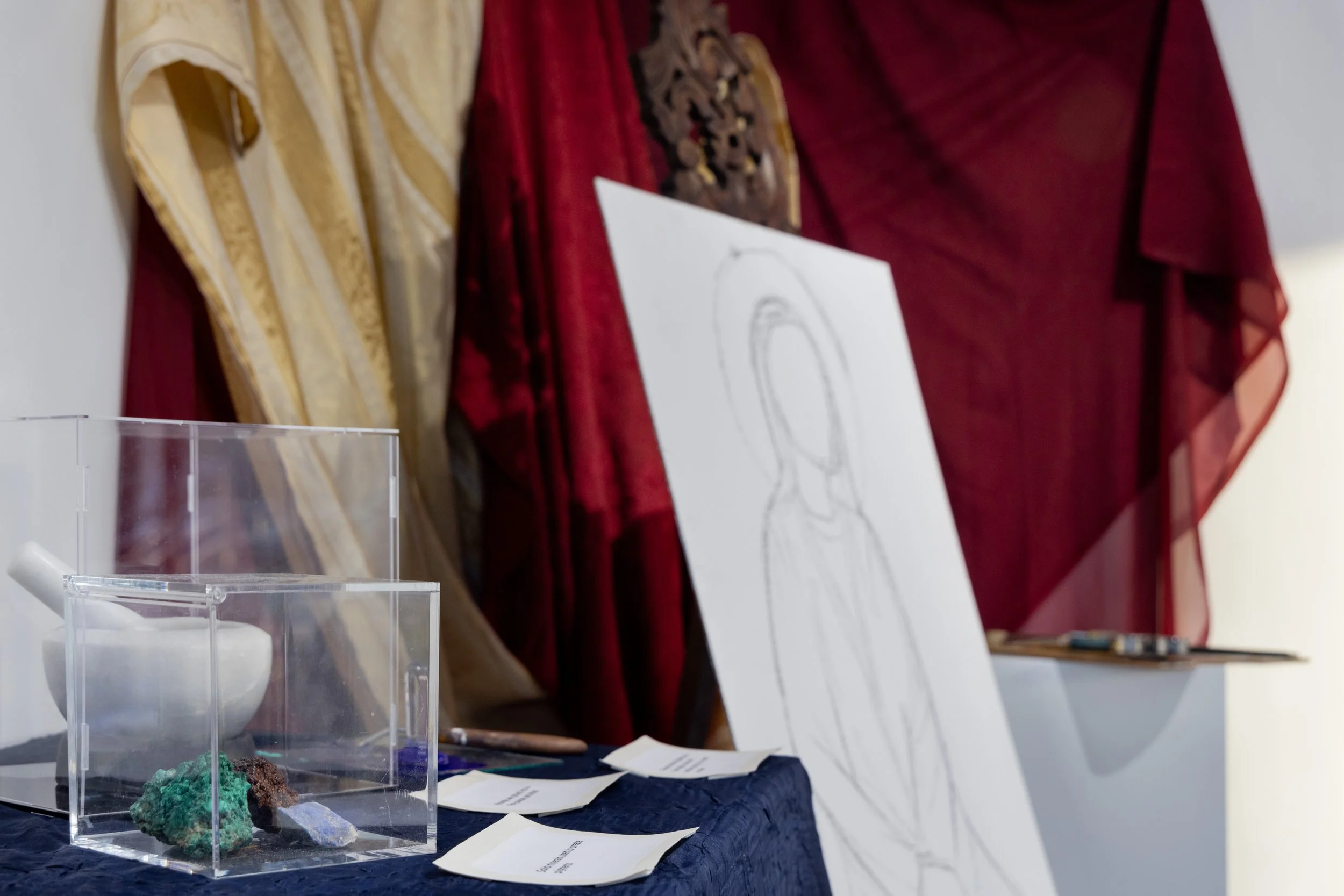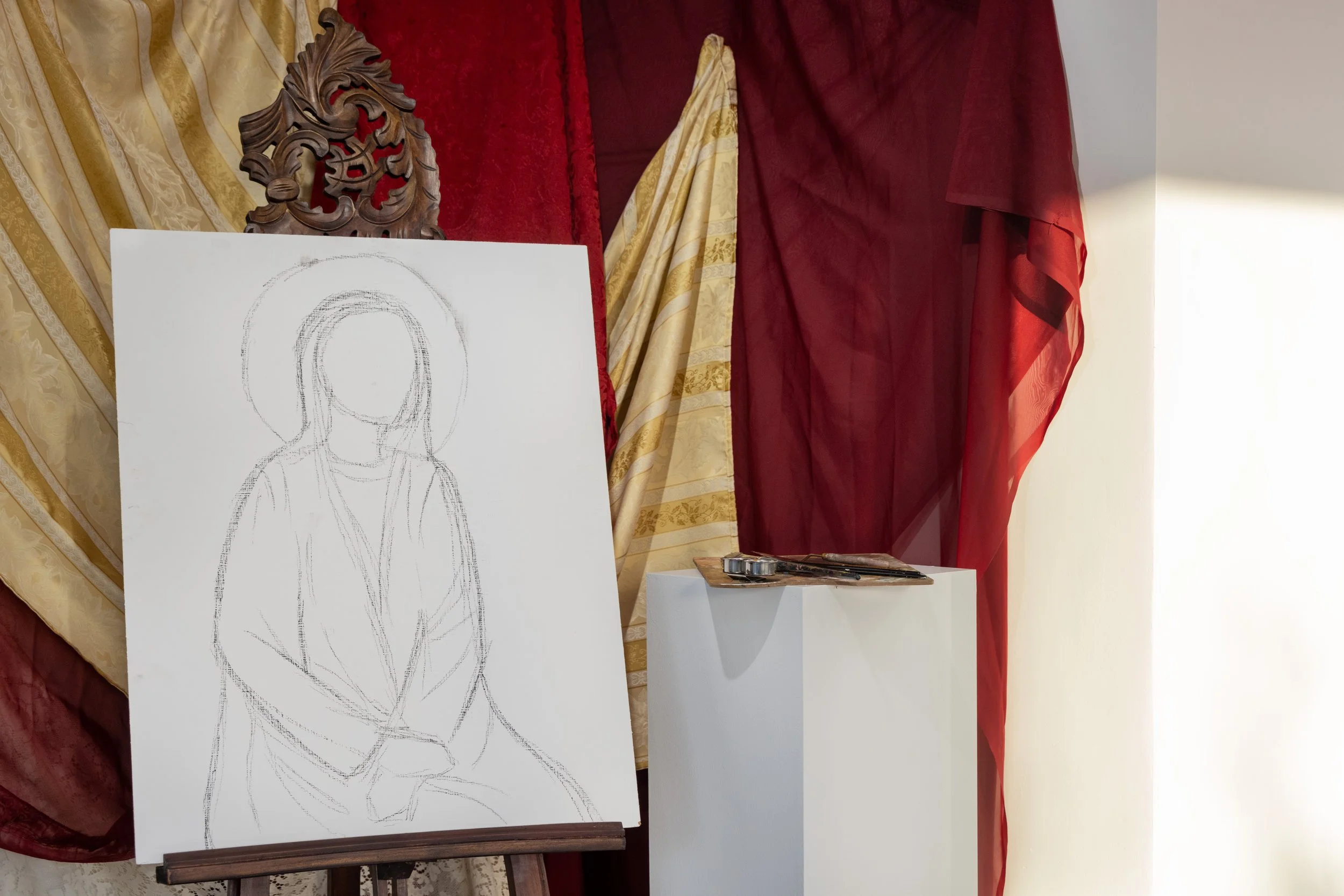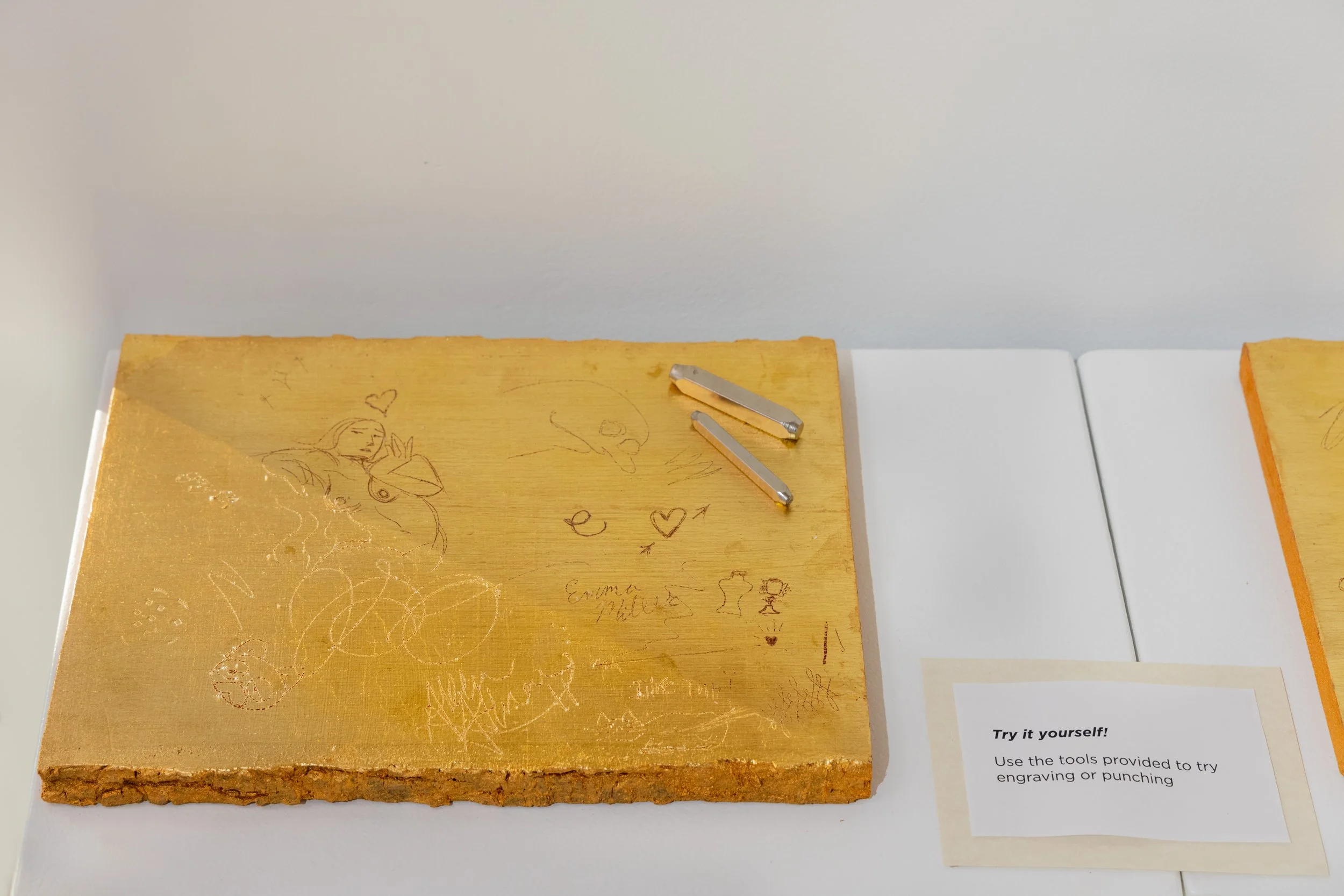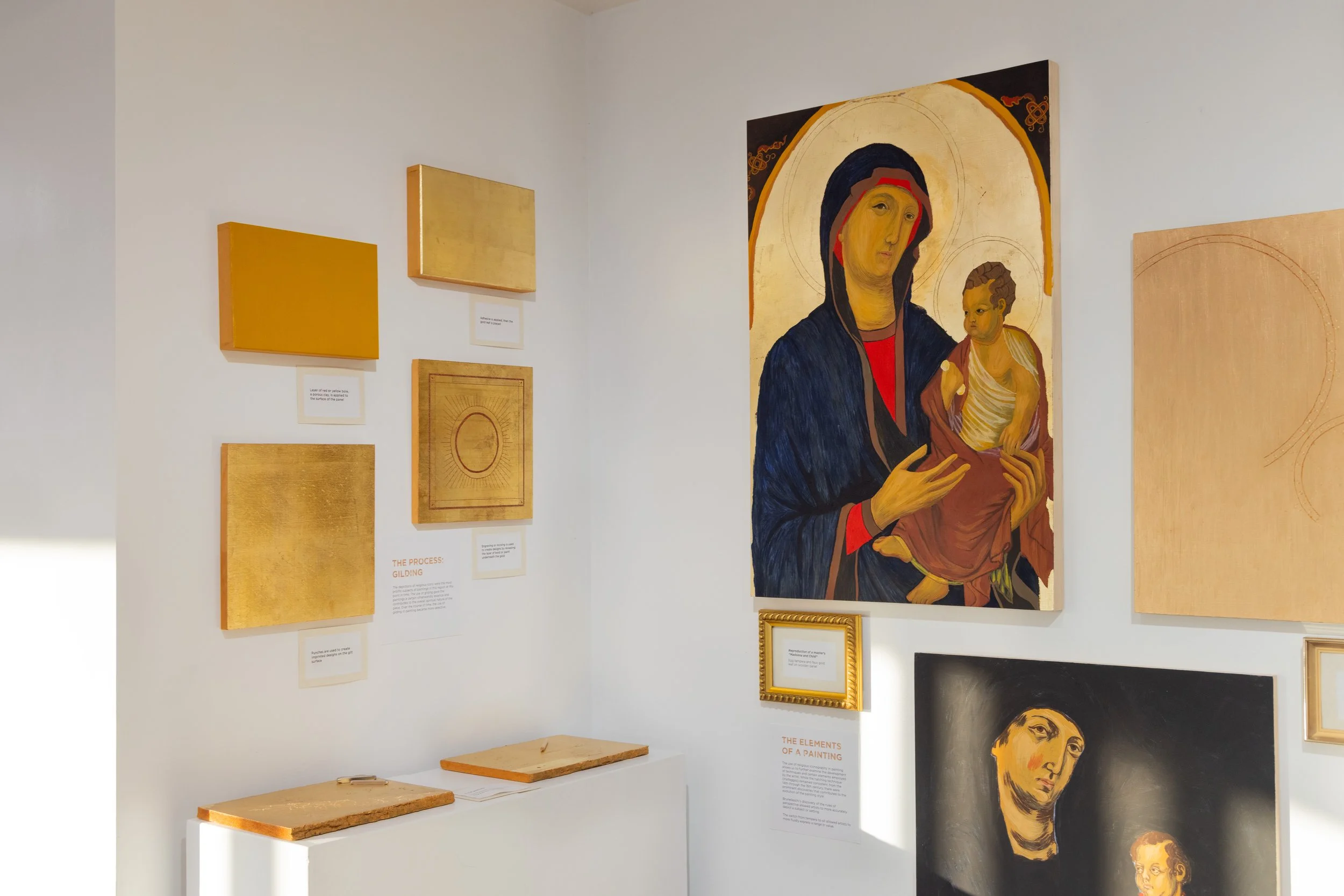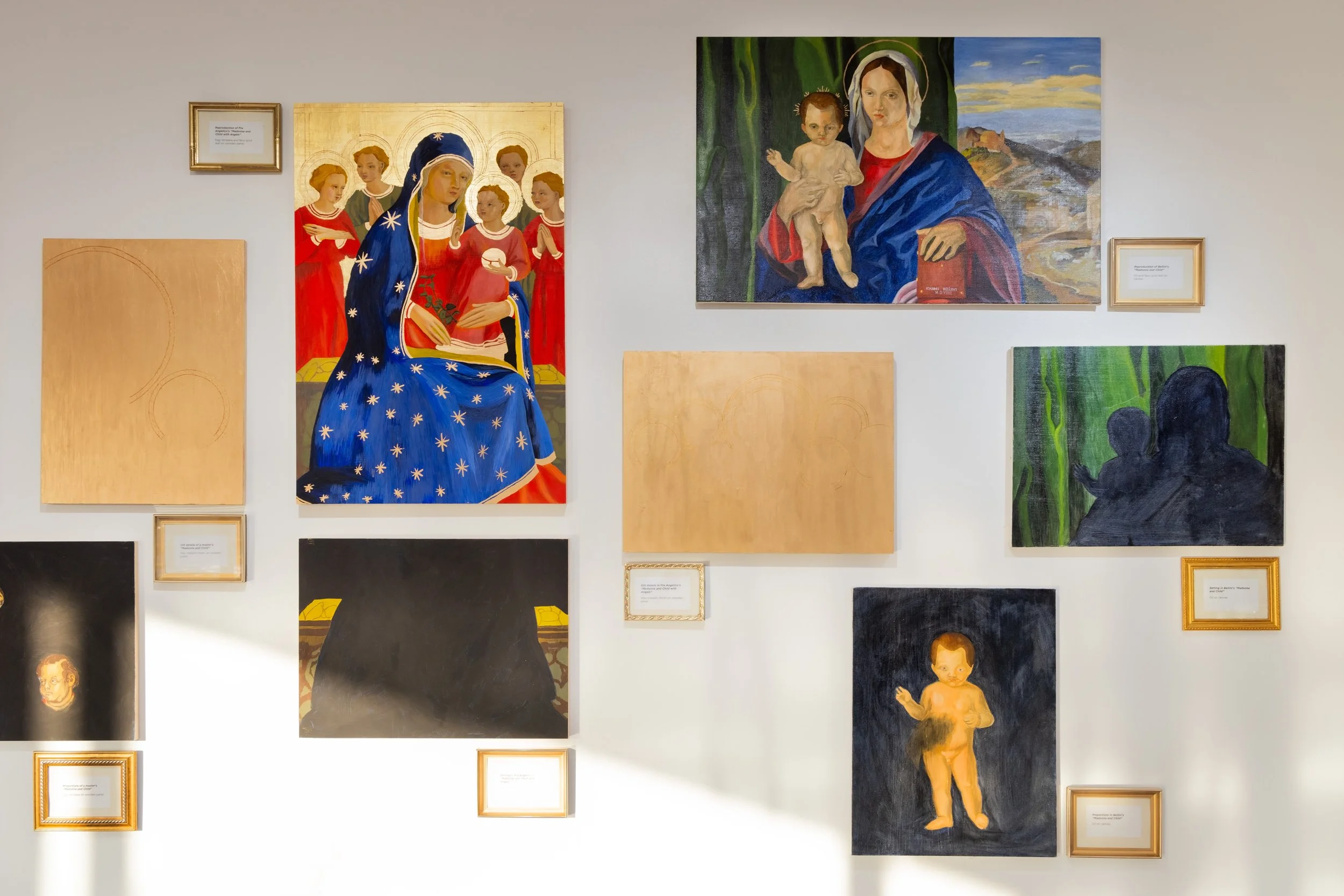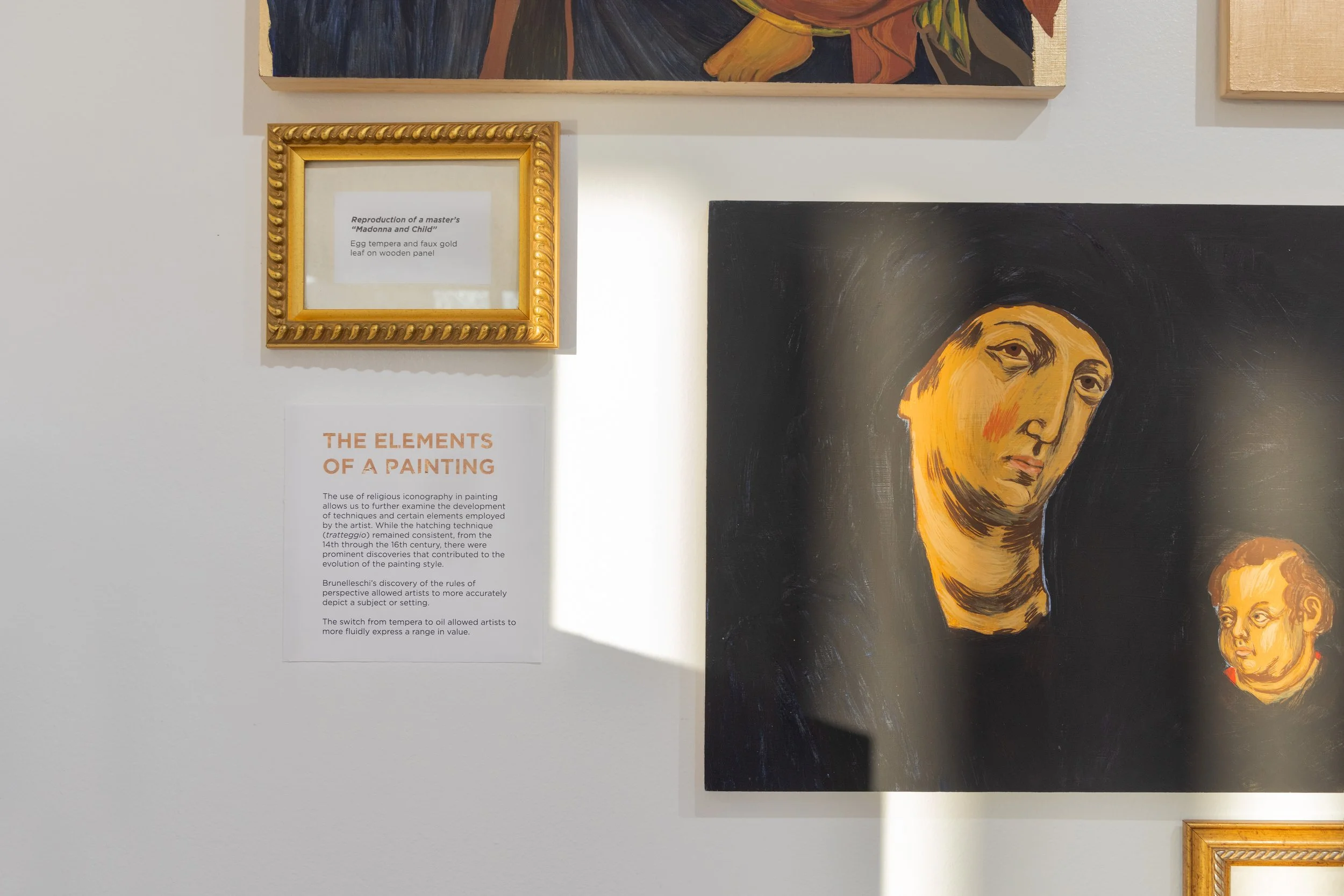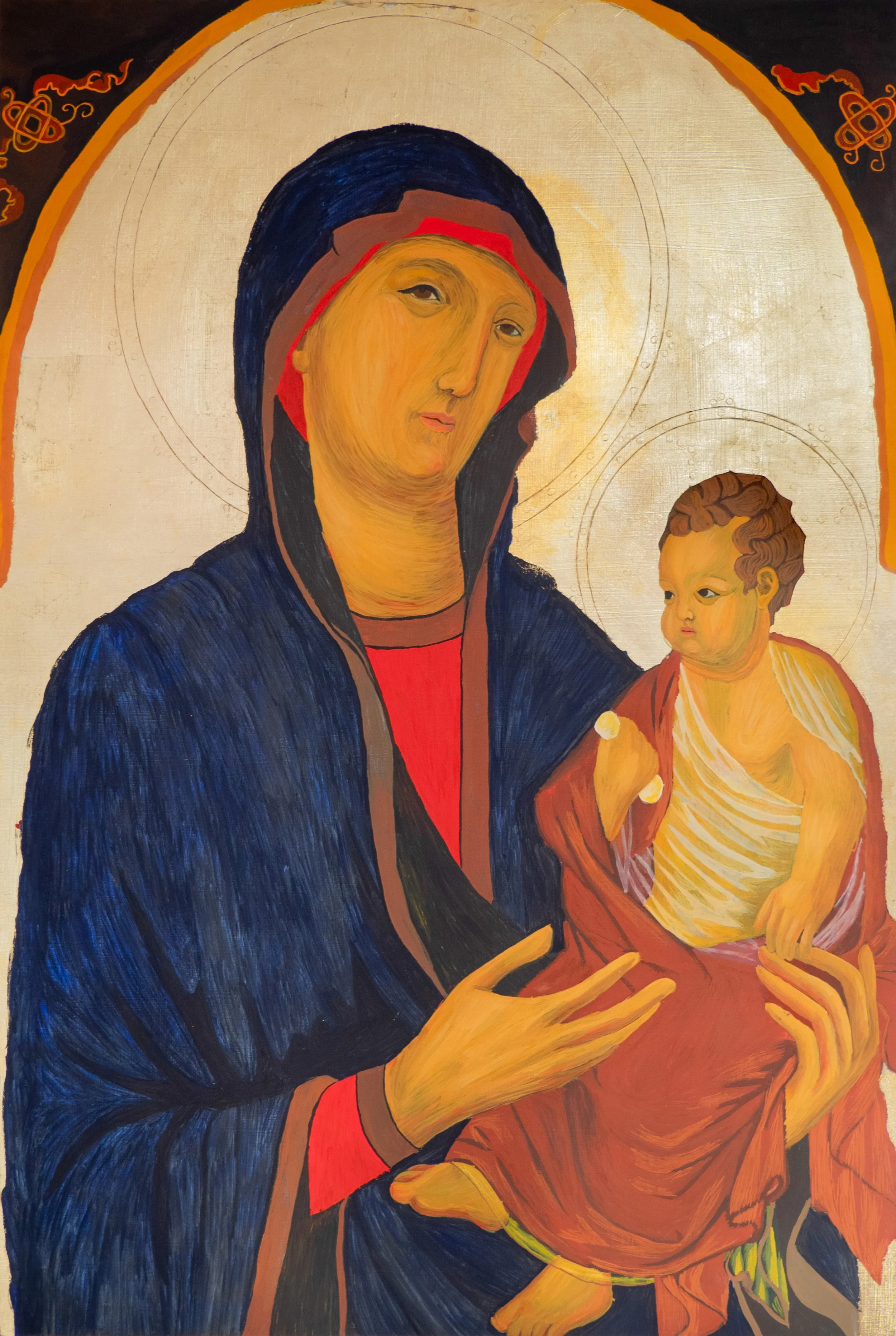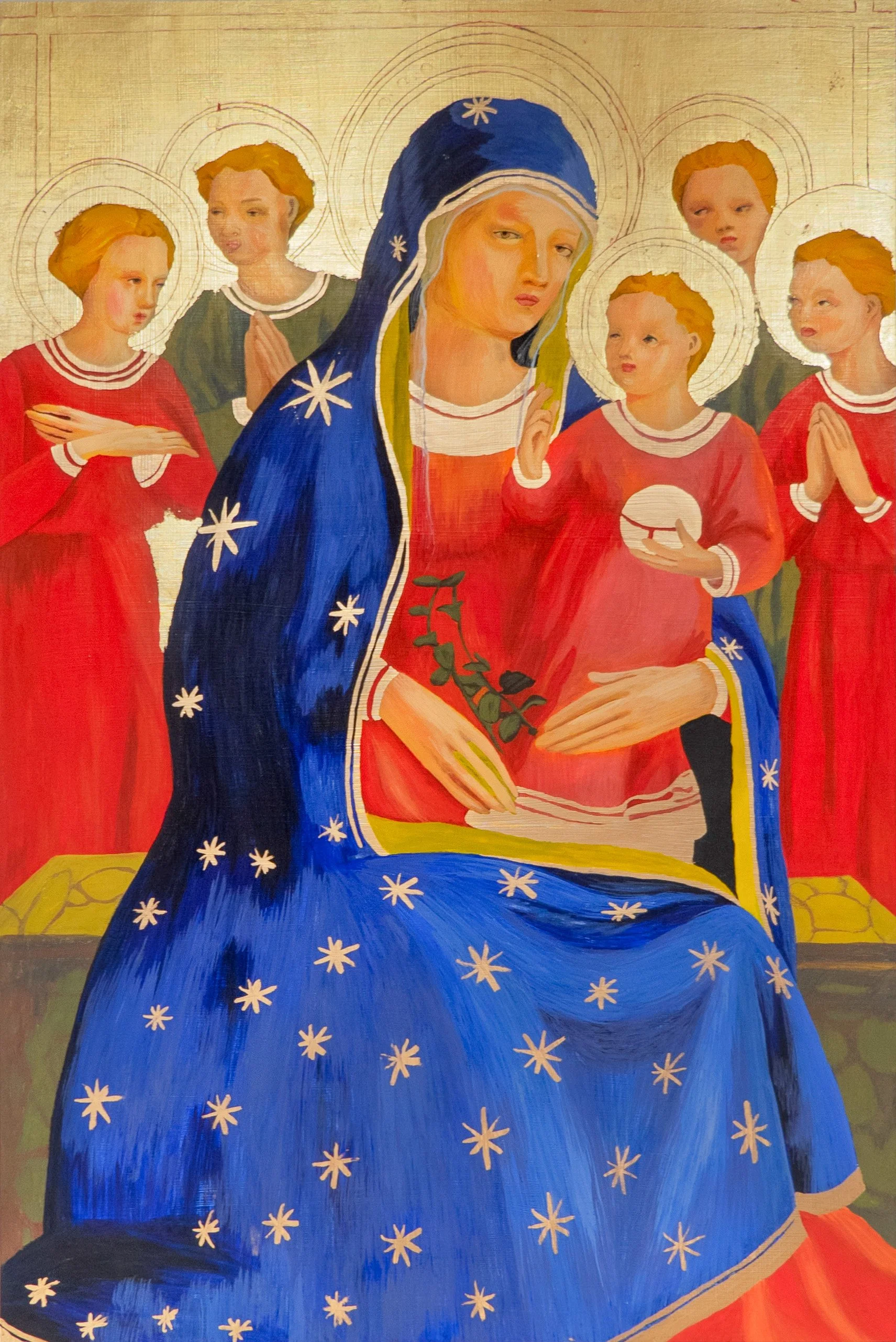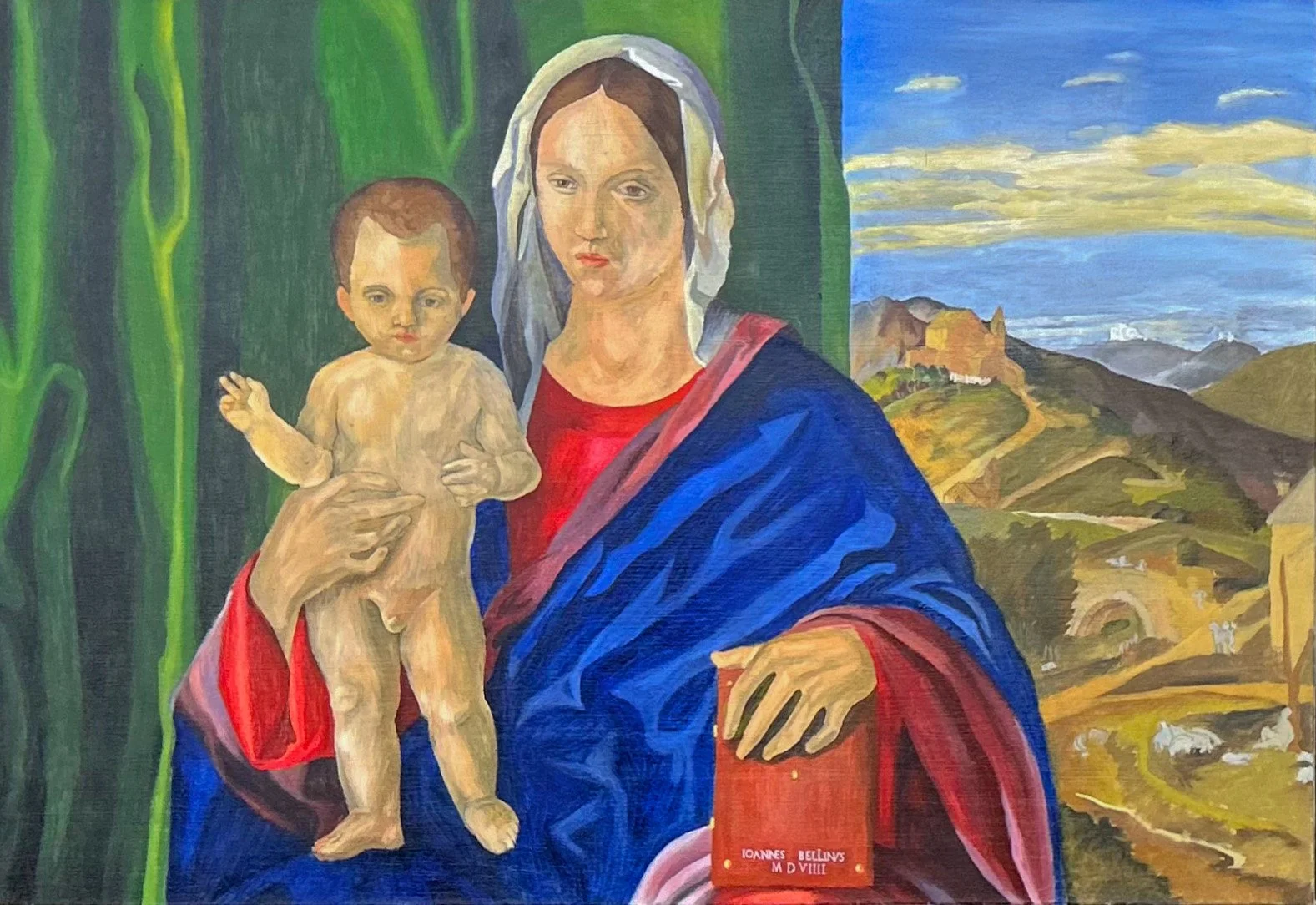ART ENDURING ETERNITY
January 2024 - Present
This exhibition offers a chronological exploration and analysis of Christianity in Italian painting from the 14th - 16th century, with a particular focus on the motif of the Madonna and Child. The focus on these subjects provides a lens to observe the evolution of painting during this period in which art flourished. The works featured in this exhibition are reproductions of pieces currently on display at the Detroit Institute of Arts. The purpose of this exhibition is to provide a journey through the development of Italian painting. Information broken down piece-by-piece to make for a digestible educational experience. As both artist and curator, Adrienne invites the viewer to reflect on the enduring power of art to inspire faith and appreciate its continued relevance in our modern culture.
Research journal and workbooks to allow guests to better interact with displays and absorb information.
The Byzantine empire heavily influenced the artwork that emerged during the Renaissance. Due to Italy’s proximity to the empire itself, many artists trained under Byzantine masters, and this is why we can see defining stylistic attributes in the art of this time and region.
Many aspects were factored into the overall price of a painting, one of these being the materials used to create the colors. Colors were created with certain minerals, such as lapis lazuli to make ultramarine blue, a color artists still frequently use today. Some of these minerals were very difficult to acquire, and the process of mixing certain colors is much more complex than others.
Many prolific artists in this time period had apprentices who helped prepare supplies for the artist and contributed to the overall work behind a piece. Artists would have a person sit for a painting to use as a reference for the subject of their work.
The depictions of religious icons were the most prolific subject of paintings in this region at this point in time. The use of gilding gave the paintings a certain otherworldly essence to contribute to the spiritual nature of the piece.
Interactive element for visitors to experiment with etching and punching techniques on gilt panels.
The use of religious iconography in painting allows us to further examine the development of techniques and certain elements employed by the artist. From the 14th through the 16th century, there were prominent discoveries that contributed to the evolution of the painting style. Brunelleschi's discovery of the rules of perspective allowed artists to more accurately and believably depict a subject or setting. The switch from tempera to oil allowed artists to more fluidly express the range of value.
Reproduction of Master of Citta di Castello's "Madonna and Child" (1305-20). Egg tempera and faux gold leaf on wooden panel.
Reproduction of Fra Angelico's "Madonna and Child with Angels" (1425-30). Egg tempera and faux gold leaf on wooden panel.
Reproduction of Giovanni Bellini's "Madonna and Child" (1509). Oil and faux gold leaf on canvas.

